Is Israel using its Iron Beam laser to shoot down rockets?
- By Alex Hollings
Share This Article
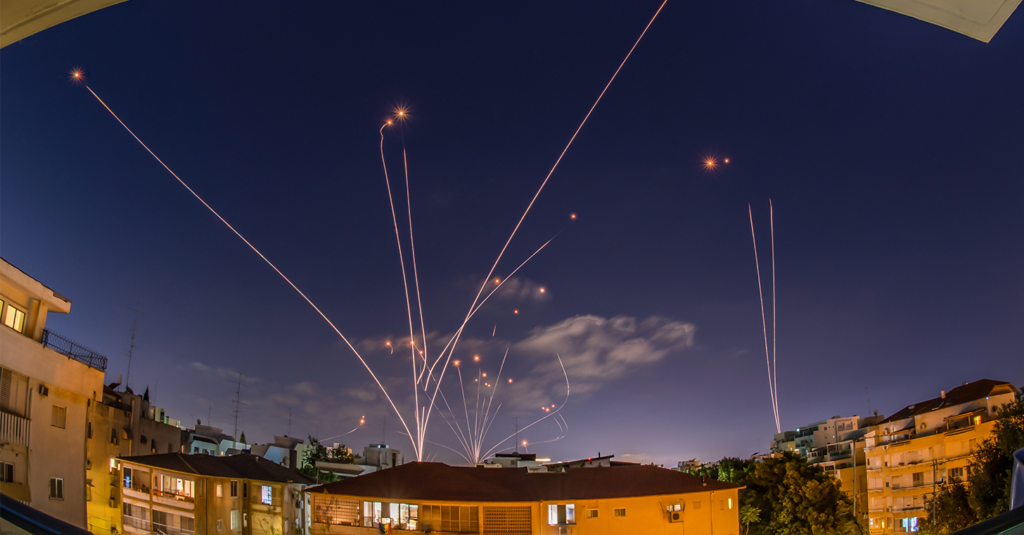
Since a Hamas offensive took Israeli forces by surprise on October 7, footage has been circulating online that appears to show incoming rockets or mortars being shot down by an Israeli air defense laser system known as the Iron Beam. But while the Iron Beam is indeed a genuine directed-energy weapon developed by Israeli defense contractor Rafael Advanced Defense Systems, these videos are not real.
❗️The video reportedly shows the first use of the 🇮🇱IDF's Iron Beam laser missile defense system to intercept Hamas missiles flying from the Gaza Strip.
— 🪖Military news (@front_ukrainian) October 15, 2023
According to known data, the Iron Beam is capable of intercepting missiles at a range of up to 7 km. The main advantage of the… pic.twitter.com/ehcLYySj6I
The first indicator that this footage does not depict the use of a directed-energy weapon like Israel’s Iron Beam is the fact that you can see the beam. Lasers used in military applications produce no visible light, meaning there would be very little to see in actual footage of such a night intercept. Instead, this footage likely shows a lens flare produced by the interception of an inbound rocket by a Tamir interceptor launched by Israel’s Iron Dome batteries.
Another video making the rounds that alleges to show the Iron Beam in action has similarly been debunked by savvy online users.
This one, which has accumulated nearly six million views on X, formerly Twitter, has been confirmed to show footage captured from the popular open-world tactical shooter game Arma 3.
Arma 3’s developer, the Czech Republic-based Bohemia Interactive, even issued a statement on October 10 discussing the company’s displeasure with in-game footage being used for what they described as “war propaganda.”
“Developers from the independent Czech game development studio Bohemia Interactive would like to address the recent circulation of videos which were originally taken from their game Arma 3, and falsely used as footage from real-life conflicts, mainly from the current war in Ukraine or Israeli–Palestinian conflict,” Bohemia Interactive’s statement reads before outlining ways people can determine if the footage they see shared online might actually be realistic game clips.
But while these clips may not be real, the Iron Beam system – a directed-energy weapon intended to take down short-range airborne targets, like rockets and artillery shells – is a very real system that’s currently working its way toward service.
Related: Lasers won’t save us from hypersonic weapons
The real Iron Beam
Rafael Advanced Defense Systems’ Iron Beam is a 100 kiloWatt-class High Energy Laser Weapon System (HELWS) that’s designed to supplement Israel’s highly touted Iron Dome air defense systems. While Iron Beam won’t replace Iron Dome, it does offer a number of significant advantages over these sorts of traditional air defense batteries. Yet, it’s important to understand that directed energy weapons like Iron Beam do come with their fair share of shortcomings.
Iron Beam is a solid-state laser, meaning it uses a solid crystalline material known as a “lasing medium” (to focus the beam) rather than a gas or liquid as the much larger chemical lasers of the 1980s did. This makes Iron Beam’s lasing medium far smaller and – importantly – safer to operate, as there’s no need to tote around a bunch of hazardous chemicals. Until fairly recently, these sorts of lasers couldn’t produce the power required for weapons applications, but breakthroughs in solid-state laser technology in recent years have finally started making lasers a feasible means of engaging targets… at least, in the right circumstances.
Laser weapons like the Iron Beam come with a number of significant advantages over the kinetic interceptors leveraged by current air defense systems. Israel’s Iron Dome, for instance, takes down incoming rockets and mortars by engaging them with specialized interceptors, known as Tamir missiles, that can range in cost from $20,000 to $100,000 each. The Congressional Research Service reports that the average cost per shot from a laser intercept, on the other hand, will ring in between just $1 and $10.
But with Hamas launching thousands of rockets into Israel, the more important benefit of the Iron Beam may be its near-limitless depth of magazine, a term used to describe the number of times it can be fired without having to reload. Israel currently operates at least 10 Iron Dome batteries, each equipped with three or four launchers loaded with 20 Tamir missiles a piece. As these batteries run dry, they can leave an area undefended for a short time while reloading. A laser system like the Iron Beam, on the other hand, will never run out of ammo as long as it maintains a steady source of power. Lasers also intercept targets faster (at the speed of light) and can be quickly adjusted to compensate for a moving target, making them well-suited for drone defense as well.
In April 2022, the Israeli Defense Ministry announced the Iron Beam had successfully been used in testing to intercept short-range threats like small drones, rockets, mortars, and anti-tank missiles in a myriad of tests conducted the month prior in the Negev Desert.
Related: Air Force takes delivery of ‘stealthy’ laser weapon for Ghostrider Gunships
The Iron Beam is said to be 100 kilowatts… How powerful is that?
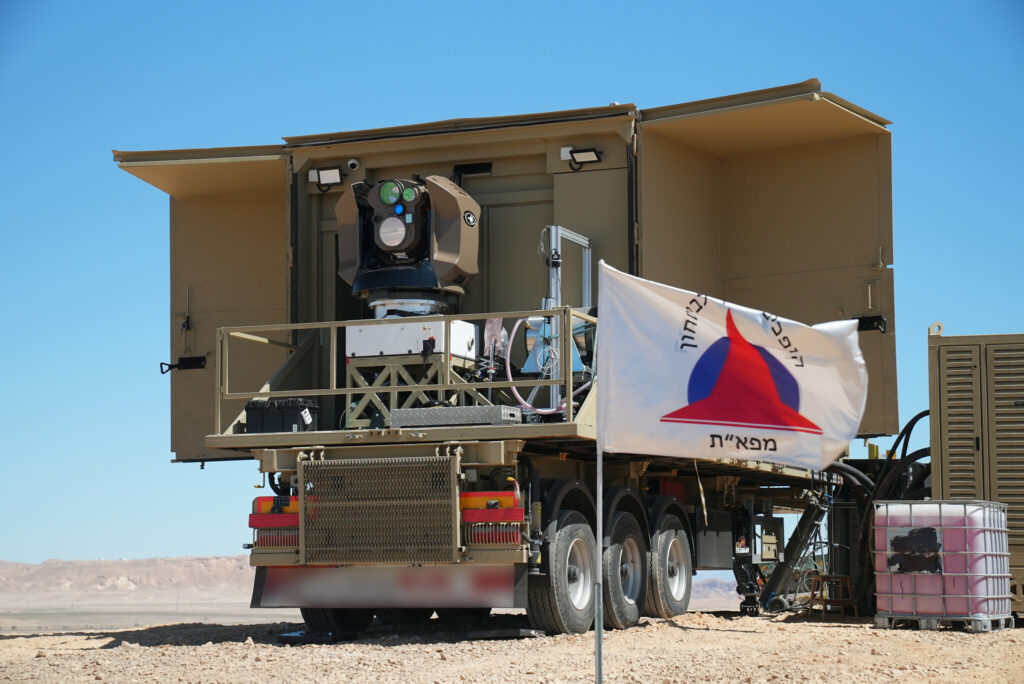
The intended 100-kilowatt output of the Iron Beam places it ahead of many of the laser weapon systems already in use by the United States, but well behind many of the advanced systems currently heading toward service for missile defense applications today. This isn’t necessarily a shortcoming, however, as the Iron Beam has a suitable power output for its narrowly defined, but nonetheless important, role. In fact, even today’s most advanced directed energy and laser technologies are primarily suited only for short-range engagements for reasons we’ll clarify shortly.
The Iron Beam is being developed specifically to supplement the Iron Dome in the short-range portion of Israel’s layered air defense apparatus, rapidly engaging rockets, mortars, and similar short-range weapons. Other systems, like the intermediate-range air defense platform known as David’s Sling, and the ballistic missile defense system known as the Arrow Weapon System (AWS), are tasked with intercepting more capable or longer-ranged weapons.
There are no universally agreed-upon metrics to assess the capability of a laser system based on power output, but the Congressional Research Service has established a general guide for the types of targets a laser may be able to take down, based on the amount of power it can deliver to the target.
- 100kW-Range Weapons: Can engage unmanned aircraft, small boats, rockets, artillery, or mortars;
- 300kW-Range Weapons: Can engage the side of a cruise missile fuselage to destroy it or knock it off course;
- 1MW (1,000kW)-Range Weapons: Can engage ballistic or hypersonic missiles, but may be limited to burning through the side of the fuselage
This places Israel’s Iron Beam on the lower end of the power scale required for air defense duties, making it a better option for rockets and mortars than for missiles or even larger drones. Lasers destroy targets by transferring heat into them (burning through them) and at the 100-kilowatt level, it may take some time to burn through more potent targets. In 2020, for instance, it took 15 straight seconds of sustained fire from a 150kW-class weapon to destroy a small airborne drone in testing.
Related: Was Israel’s Iron Dome overwhelmed, overhyped, or right on target?
Lasers come with some big benefits… but with some big problems too
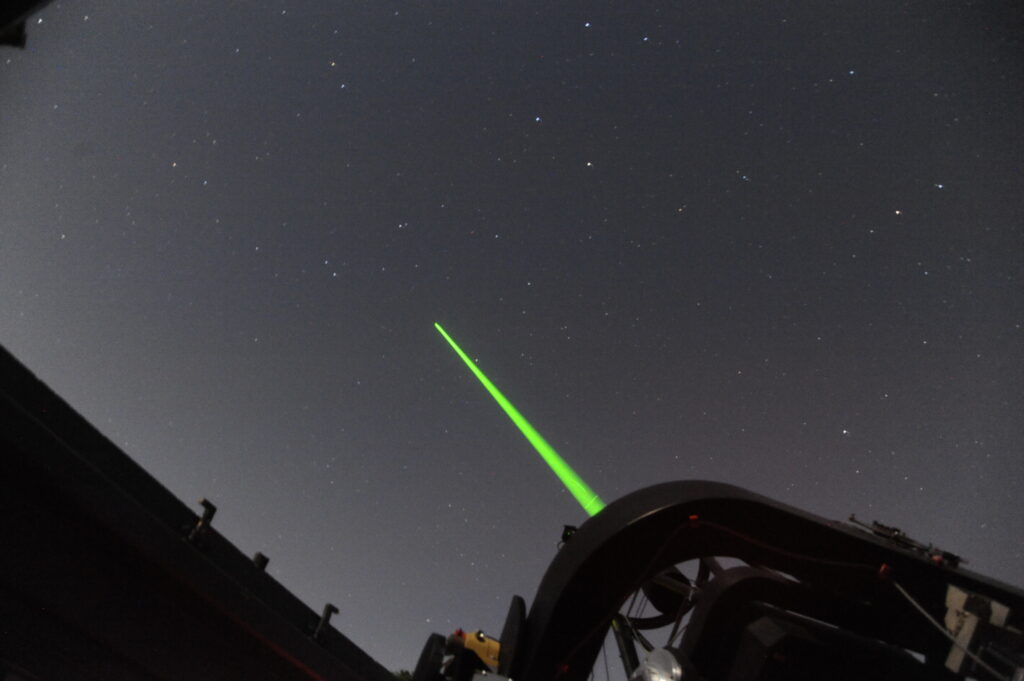
Lasers also come with a number of other technical limitations that Sandboxx News outlines in greater depth in our dive into the possibility of using lasers to intercept modern hypersonic missiles. Some of these shortcomings include the need for having direct line-of-sight with a target, the need for extremely precise beam control (in order to be effective, the laser has to keep hitting the exact same point on a moving target as it burns), and less commonly understood issues like atmospheric scattering and thermal blooming.
Atmospheric scattering is a term used to describe the scattering effect that water vapor, sand, salt, smoke, air pollution, and other substances found in the atmosphere can have on a laser beam. This atmospheric turbulence is a serious problem – to the point where the Pentagon currently sees lasers as a viable weapon system only at ranges of less than a mile. Even optimistic projections for the near future still only suggest lasers will be viable at ranges of five miles or less, which is why systems like the Iron Beam are best suited for short-range engagements.
Lasers can be effective at greater ranges, but not for the destruction of targets. Instead, they can be used to blind or “dazzle” a weapon, aircraft, or satellite’s optical sensors to disrupt the collection of intelligence or interfere with data being transmitted through the kill chain (relaying target data for precision weapons).
Thermal blooming occurs as a laser continues to fire in the exact same direction for an extended period, heating up the air it passes through until it ultimately defocuses the laser beam. This isn’t a serious issue when engaging a target from the side or at an angle as it flies through the sky, but it becomes a bigger problem with engaging resilient targets like a missile while it’s flying straight at you. Rockets and mortars like those employed by Hamas are not particularly heat-resistant targets, minimizing the risk of thermal blooming for the Iron Beam.
Related: Can this Navy patent explain away many UAP sightings?
How does the Iron Beam compare to other lasers in service?
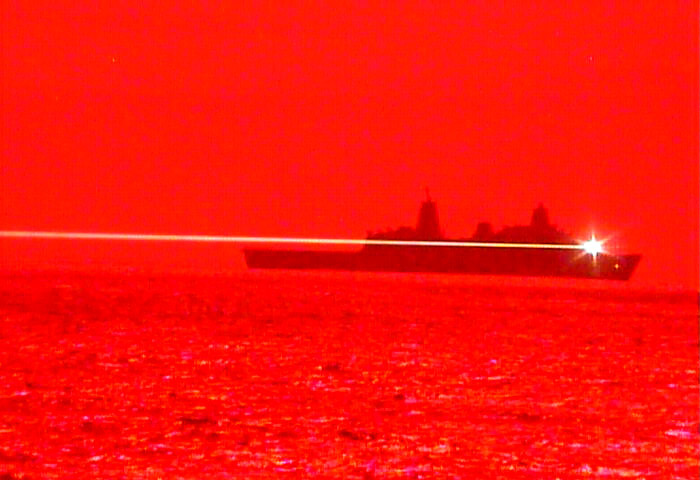
The U.S. Navy first installed a laser on one of its warships in 2014 in the 33-kilowatt AN/SEQ-3 Laser Weapon System (LaWS), with the stronger 60-kilowatt HELIOS, or High-Energy Laser with Integrated Optical Dazzler and Surveillance system following in 2019. The Navy believes HELIOS will eventually be able to output as much as 150 kilowatts; the service intends to begin testing the 300-kW HELCAP, short for High Energy Laser Counter Anti-ship Cruise Missile Program, next year.
In 2021, Lockheed Martin delivered the 60-kilowatt Airborne High Energy Laser (AHEL) weapon for testing aboard the U.S. Air Force’s AC-130 Ghostrider gunships, with plans to scale the weapon to 100 kilowatts over time.
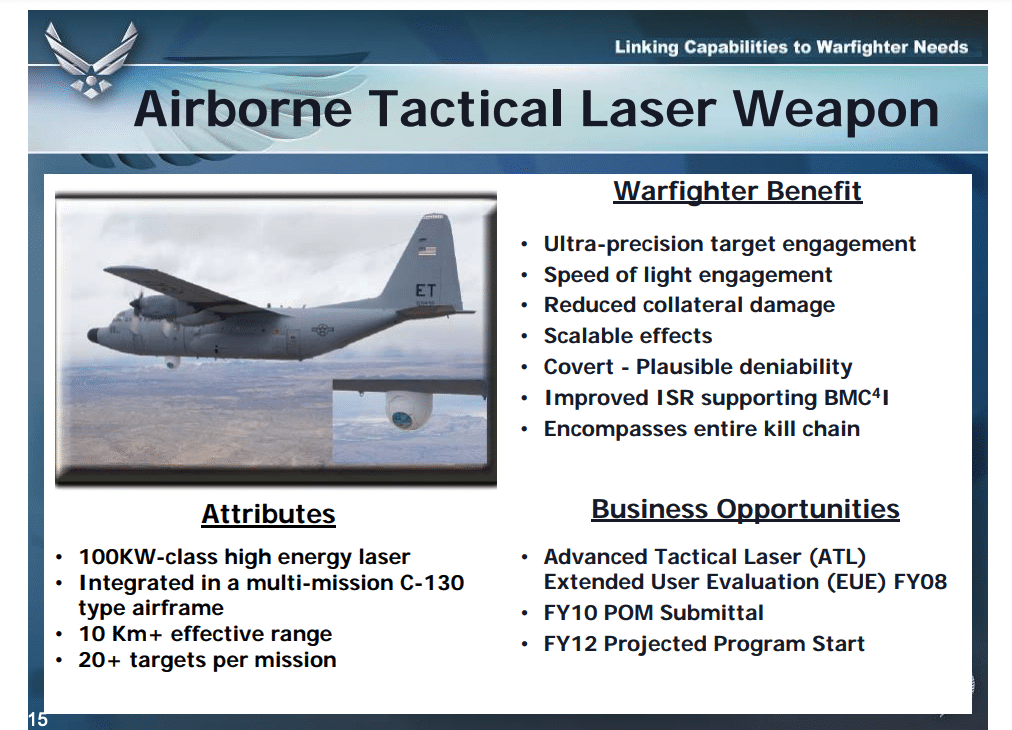
In September of last year, Lockheed Martin delivered the most powerful tactical laser fielded to date, the 300-kW-class Indirect Fires Protection Capability-High Energy Laser (IFPC-HEL), to the U.S. Army. And in late July, Lockheed Martin announced plans to field a 500kW-class laser, which promises to be the most powerful military laser ever put into active service once it manifests.
America’s competitors are also developing their own lasers for military application. In 2019, Russia put its Peresvet laser weapon into service, though little has been disclosed about its actual capabilities to date. Thus far, it appears the system is intended to serve as a “dazzler” to interfere with satellite sensors and it may have the power required for point-defense against small drones. And in 2023, China unveiled their 30-kilowatt vehicle-mounted laser system dubbed the LW-30, intended a point-defense system to be used against small, low-flying drones and similar targets.
Read more from Sandboxx News
- Do lessons from the battles for Fallujah apply to Gaza?
- The Army’s new V-280 Valor’s cockpit is out of this world
- Operation Dragonfly: Ukraine combines commandos and ATACMS missiles to wreak havoc on Russian airfields
- The US has secretly been testing its new LRSO nuclear cruise missile
- What exactly is Iran’s shadowy Quds Force?
Related Posts
Sandboxx News Merch
-

‘AirPower’ Classic Hoodie
$46.00 – $48.00 Select options This product has multiple variants. The options may be chosen on the product page -

‘Kinetic Diplomacy’ Bumper Sticker (Black)
$8.00 Add to cart -

‘Sandboxx News’ Trucker Cap
$27.00 Select options This product has multiple variants. The options may be chosen on the product page

Alex Hollings
Alex Hollings is a writer, dad, and Marine veteran.
Related to: Gear & Tech
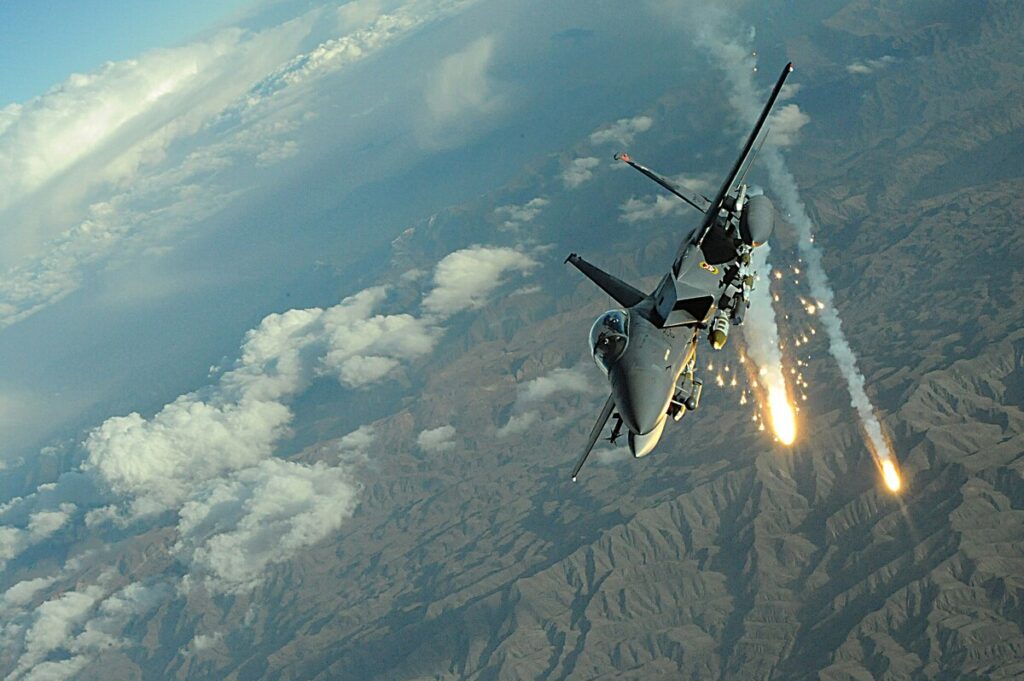
How an F-15E scored its only air-to-air kill… with a bomb

The military roots of Juneteenth and why we celebrate it

BUD/S instructors have their favorite games to make SEAL candidates suffer

Israel wipes out Iranian F-14 Tomcats on the airstrip
Sandboxx News
-

‘Sandboxx News’ Trucker Cap
$27.00 Select options This product has multiple variants. The options may be chosen on the product page -

‘AirPower’ Classic Hoodie
$46.00 – $48.00 Select options This product has multiple variants. The options may be chosen on the product page -

‘AirPower’ Golf Rope Hat
$31.00 Select options This product has multiple variants. The options may be chosen on the product page -

‘Sandboxx News’ Dad Hat
$27.00 Select options This product has multiple variants. The options may be chosen on the product page
